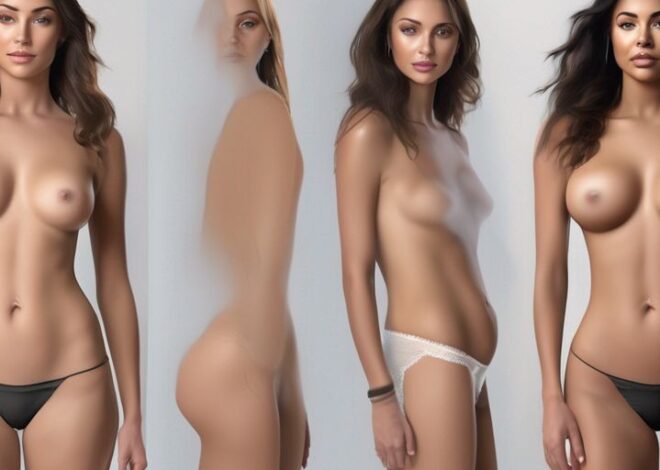
Decoding AI Photo Undress Capabilities: Innovation or Invasion?
In the era of rapid technological advancements, AI-driven tools such as Nudify.Online, which uses sophisticated algorithms to digitally remove clothes from images, have sparked significant debate. This article delves into the multifaceted world of AI photo undress capabilities, exploring its technological underpinnings, legal ramifications, societal impacts, and ethical considerations to discern whether these innovations represent a breakthrough or a breach of privacy.
Key Takeaways
- AI photo undress tools like Nudify.Online leverage complex image recognition and processing technologies to simulate the removal of clothing from digital images.
- These tools operate in a contentious legal and ethical landscape, with varying international laws impacting their development and use.
- The societal implications of such technologies are profound, affecting perceptions of privacy, consent, and the potential for misuse.
- Technical challenges include ensuring the accuracy, reliability, and fair application of these AI models across diverse data sets.
- Future developments in AI undressing technologies must balance innovation with stringent ethical standards and robust privacy protections.
Exploring the Technology Behind Nudify.Online

How AI Powers the Clothes-Removing Process
Nudify.Online leverages sophisticated AI algorithms to analyze and interpret images, effectively removing clothes from digital photos. This process involves deep learning techniques that recognize and differentiate between clothing and human skin, allowing for precise image alterations without manual intervention.
Advancements in Image Recognition and Processing
The core technology of Nudify.Online has seen significant advancements in image recognition capabilities. These improvements not only enhance the accuracy of the clothes-removal but also ensure faster processing times, making the application more efficient and user-friendly.
Ethical Algorithms: Balancing Innovation and Privacy
The development of Nudify.Online involves the creation of ethical algorithms that aim to balance technological innovation with privacy concerns. These algorithms are designed to prevent misuse and ensure that the application is used responsibly, adhering to ethical standards in AI development.
The Legal Landscape of AI Undressing Technologies

Current Laws and Regulations
The legal framework surrounding AI undressing technologies is still in its infancy. Most jurisdictions lack specific laws that address the nuances of AI-generated images, leading to a patchwork of applicable general privacy and decency laws. Key challenges include defining consent and the legality of creating or distributing such images.
International Perspectives on Privacy
Different countries have varied approaches to privacy and AI. For instance, the European Union’s GDPR provides stringent guidelines on data privacy, which could extend to AI-generated images. However, enforcement and interpretation remain inconsistent across borders, complicating compliance for global platforms.
Potential Legal Reforms and Their Implications
As the technology advances, legal systems worldwide are considering reforms to better manage AI’s capabilities and implications. Proposed changes could include stricter consent requirements and clearer definitions of digital personhood and image rights. These reforms aim to balance innovation with privacy protections, ensuring that technological advancements do not come at the expense of ethical standards.
Societal Implications of AI-Driven Undressing Tools

Impact on Personal Privacy
The deployment of AI technologies like Nudify.Online, which can digitally remove clothing from images, poses significant privacy concerns. Individuals may not be aware that their images could be manipulated in such a manner, leading to potential misuse without consent.
Public Perception and Social Acceptability
Public opinion on AI-driven undressing tools is deeply divided. While some see it as a technological advancement, others view it as a severe invasion of privacy. This division is reflected in the varying levels of social acceptability across different cultures and communities.
The Role of Media in Shaping Opinion
Media coverage plays a crucial role in shaping public opinion about AI undressing technologies. Often, the media highlights the potential for misuse, which can influence public perception and potentially lead to stricter regulations or outright bans of such technologies.
Technical Challenges and Limitations

Accuracy and Reliability of AI Models
Achieving high accuracy and reliability in AI models is crucial for maintaining user trust and ensuring ethical application. Variability in image quality and lighting conditions can significantly affect the performance of these models, leading to inconsistent results.
Handling Diverse Data Sets
The diversity of data sets, including variations in body types, clothing styles, and cultural contexts, poses a significant challenge. Effective training of AI models requires a broad and inclusive data set to ensure fairness and accuracy across different demographics.
Future Challenges in AI Development
As AI technology evolves, new challenges emerge, such as improving the sophistication of algorithms and integrating ethical considerations into AI development. The ongoing need for balancing innovation with ethical standards is critical for the sustainable growth of AI technologies.
Ethical Considerations and Debates

Consent and AI: A Complex Issue
The integration of AI in applications like Nudify.Online raises significant concerns about consent. Users and subjects of the images might not be fully aware or agreeable to the use of their likenesses in such a manner, leading to ethical dilemmas about user autonomy and privacy.
The Moral Responsibilities of Developers
Developers of AI technologies that can undress digital images carry a heavy burden of responsibility. They must ensure that their creations are used ethically and consider the potential for misuse. This includes implementing robust measures to prevent unauthorized use and ensuring transparency in how the technology is applied.
Balancing Innovation with Ethical Standards
While AI offers vast potential for innovation, it must be developed and used within ethical boundaries. The challenge lies in advancing technology while respecting individual privacy and dignity. This balance is crucial to maintaining public trust and the social acceptability of new technologies.
Case Studies: The Use and Misuse of AI Undress Technology

Positive Applications in Various Industries
AI undress technology, while controversial, has found legitimate applications in fields such as fashion and healthcare. For instance, virtual fitting rooms use this technology to help customers try on clothes virtually, enhancing the shopping experience and reducing return rates.
Instances of Misuse and Public Backlash
The misuse of AI undress technology has led to significant public backlash. Instances of non-consensual image alterations have raised serious privacy concerns and ethical debates. This technology has been used to create inappropriate content, leading to calls for stricter regulations.
Learning from Past Mistakes
The development and deployment of AI undress technologies have provided valuable lessons. It is crucial to implement robust ethical guidelines and consent mechanisms to prevent misuse. Future advancements must balance innovation with privacy and ethical considerations.
Future Directions in AI and Privacy

Emerging Technologies and Their Implications
The landscape of AI is rapidly evolving with new technologies that promise to revolutionize privacy management. Key developments include enhanced encryption methods and real-time data anonymization techniques. These innovations aim to bolster privacy while maintaining the utility of big data.
Predictions for Privacy Norms
As AI continues to integrate into everyday life, privacy norms are expected to shift significantly. The public’s expectation for transparency and control over personal data will likely increase, demanding more robust privacy protections from AI applications.
Strengthening User Trust in AI Systems
To ensure the sustainable growth of AI technologies, it is crucial to strengthen user trust. This involves implementing stringent data protection standards and transparent AI operations. Building trust will also require consistent efforts to educate the public about AI’s benefits and its potential risks.
Conclusion
The exploration of AI photo undress capabilities, such as those offered by Nudify.Online, presents a complex blend of innovation and potential invasion of privacy. While these technologies showcase remarkable advancements in AI, they also raise significant ethical and legal concerns. The balance between leveraging AI for creative and beneficial applications while safeguarding individual privacy rights remains a critical challenge. As society navigates these waters, it is imperative to establish robust frameworks and regulations that ensure these technologies are used responsibly and ethically, preventing misuse and protecting individuals from potential harm.
Frequently Asked Questions
What is Nudify.Online?
Nudify.Online is an advanced web-application that uses cutting-edge AI technology to digitally remove clothes from images of people, showcasing the most advanced clothes-removing AI technology as of 2024.
How does Nudify.Online work?
Nudify.Online utilizes artificial intelligence to analyze the images uploaded by users, recognizing and processing the clothing in the images, and digitally removing them to display the underlying body without real physical exposure.
Is using Nudify.Online legal?
The legality of using technologies like Nudify.Online varies by country and jurisdiction. It’s important to consult local laws and regulations regarding privacy and digital content manipulation before using such technologies.
What are the ethical implications of using Nudify.Online?
Using Nudify.Online raises significant ethical questions, particularly concerning privacy, consent, and the potential for misuse. It’s crucial to consider the moral responsibilities involved in deploying and using such technology.
Can Nudify.Online be used for positive purposes?
While primarily controversial, technologies like Nudify.Online could have positive applications, such as in art or fashion design, where understanding body shapes without physical presence can be beneficial.
How can users protect their privacy when engaging with AI technologies like Nudify.Online?
Users should be cautious about sharing personal images and seek to use platforms that prioritize user consent and data protection, ensuring that their privacy is not compromised by the use of such technologies.



